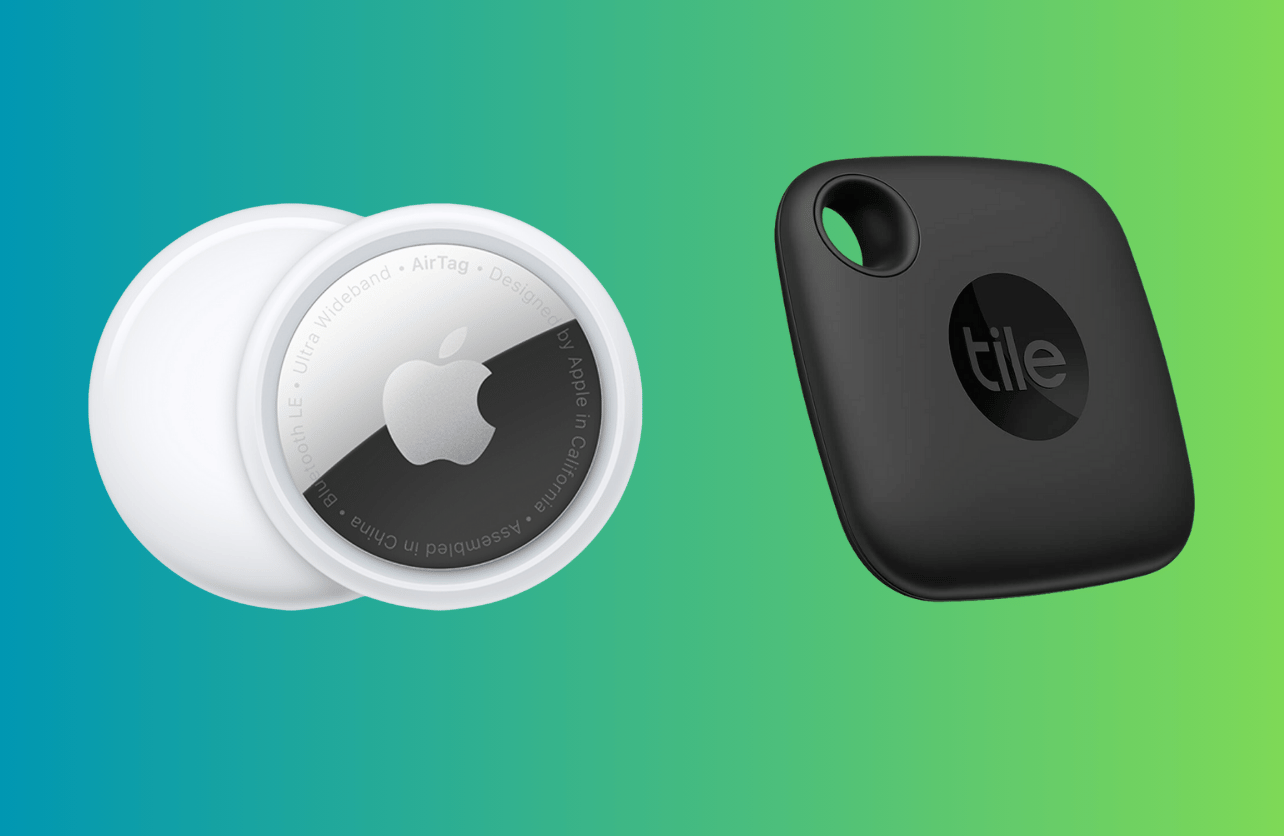AirTag vs. Tile: Which On Is Worth Your Money?

When it comes to keeping track of your valuables, both the AirTag by Apple and Tile are compelling options. Let’s go over the key features, performance, compatibility, and overall value of both devices so you can make an informed decision.
Design and Build Quality
AirTag: Apple’s AirTag has a sleek, minimalist design with a white front and a stainless steel back. It’s compact, lightweight, and blends seamlessly with Apple’s aesthetic. The AirTag is also IP67 water and dust-resistant, meaning it can withstand splashes and brief submersion in water. Additionally, the replaceable CR2032 battery offers about a year of use before needing a change.
Tile: Tile offers a variety of designs across its range, including the Tile Mate, Tile Slim, and Tile Sticker. Each has its unique shape, tailored for different uses—Mate for keys, Slim for wallets, and Sticker for small items. Tiles are generally sturdy, with some models being water-resistant. Unlike AirTag, most Tile models have non-replaceable batteries, lasting around three years before the device needs replacement.
Tracking Range and Accuracy
AirTag: One of AirTag’s standout features is the precision finding using Apple’s U1 chip, which offers ultra-wideband (UWB) technology. This allows for highly accurate location tracking, especially when you’re within close proximity to the AirTag. The Find My network, which relies on the vast number of Apple devices worldwide, makes it incredibly efficient in locating lost items even when they are far away.
Tile: Tile relies on Bluetooth for tracking, with ranges varying between models—up to 400 feet for the Tile Pro. Tile also has its own network, allowing other Tile users to help locate lost items, though it’s not as extensive as Apple’s Find My network. The tracking accuracy is decent but doesn’t match the pinpoint precision offered by AirTag’s UWB technology.
Compatibility and Ecosystem
AirTag: AirTag is designed to integrate seamlessly into the Apple ecosystem, working effortlessly with iPhones, iPads, and other Apple devices. The setup is simple—just bring the AirTag close to your iPhone, and it will automatically pair. It’s perfect for those fully immersed in the Apple ecosystem but offers little to no functionality for Android users.
Tile: Tile’s major advantage is its cross-platform compatibility. It works with both iOS and Android, and it also has integrations with smart home systems like Amazon Alexa and Google Assistant. This makes Tile a more versatile choice if you use a mix of devices or share your home with Android users.
Privacy and Security
AirTag: Apple emphasizes privacy with AirTag. The location data and history are not stored on the AirTag itself, and everything is encrypted. Additionally, Apple has implemented anti-stalking features; if an AirTag that isn’t yours is traveling with you, your iPhone will alert you.
Tile: Tile also respects user privacy, but its measures are not as robust as Apple’s. There are no equivalent anti-stalking features, which might be a concern for some users. Tile relies on the strength of its community network to locate lost items, which means others can help find your Tile, but this doesn’t offer the same level of encryption and anonymity as Apple’s system.
Price and Subscription Costs
AirTag: At around $29 for one or $99 for a pack of four, AirTags are relatively affordable considering their features. There’s no subscription fee to use Apple’s Find My network, which is a big plus for those looking to avoid ongoing costs.
Tile: Tiles are similarly priced, with models ranging from $25 to $35. However, to access premium features like Smart Alerts or a longer location history, you’ll need to subscribe to Tile Premium, which costs around $2.99 per month or $29.99 annually. This can add up over time, making Tile potentially more expensive in the long run.
Conclusion: Which Should You Choose?
If you’re an Apple user, the AirTag is a no-brainer. Its seamless integration with the Apple ecosystem, advanced tracking features, and strong privacy measures make it an excellent choice. However, if you’re looking for cross-platform compatibility, versatility, and don’t mind paying a bit extra for premium features, Tile remains a solid competitor.
Ultimately, both devices offer effective solutions for tracking belongings, so your choice will depend on your specific needs and the ecosystem you’re most invested in.
Your Trust, Our Core Commitment
At Rising Tech, earning and maintaining your trust is the cornerstone of our mission. We're dedicated to transparency, impartiality, and the relentless pursuit of truth in every article, review, and recommendation we publish. Our commitment to these principles ensures that you, our valued reader, are always equipped with reliable and unbiased information. Let us be your trusted guide in the ever-evolving world of technology.